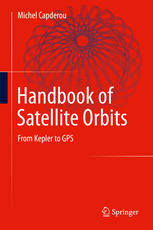

Most ebook files are in PDF format, so you can easily read them using various software such as Foxit Reader or directly on the Google Chrome browser.
Some ebook files are released by publishers in other formats such as .awz, .mobi, .epub, .fb2, etc. You may need to install specific software to read these formats on mobile/PC, such as Calibre.
Please read the tutorial at this link: https://ebookbell.com/faq
We offer FREE conversion to the popular formats you request; however, this may take some time. Therefore, right after payment, please email us, and we will try to provide the service as quickly as possible.
For some exceptional file formats or broken links (if any), please refrain from opening any disputes. Instead, email us first, and we will try to assist within a maximum of 6 hours.
EbookBell Team

5.0
40 reviewsFifty years after Sputnik, artificial satellites have become indispensable monitors in many areas, such as economics, meteorology, telecommunications, navigation and remote sensing. The specific orbits are important for the proper functioning of the satellites. This book discusses the great variety of satellite orbits, both in shape (circular to highly elliptical) and properties (geostationary, Sun-synchronous, etc.). This volume starts with an introduction into geodesy. This is followed by a presentation of the fundamental equations of mechanics to explain and demonstrate the properties for all types of orbits. Numerous examples are included, obtained through IXION software developed by the author. The book also includes an exposition of the historical background that is necessary to help the reader understand the main stages of scientific thought from Kepler to GPS.
This book is intended for researchers, teachers and students working in the field of satellite technology. Engineers, geographers and all those involved in space exploration will find this information valuable.
Michel Capderou’s book is an essential treatise in orbital mechanics for all students, lecturers and practitioners in this field, as well as other aerospace systems engineers.
—Charles Elachi, Director, NASA Jet Propulsion Laboratory